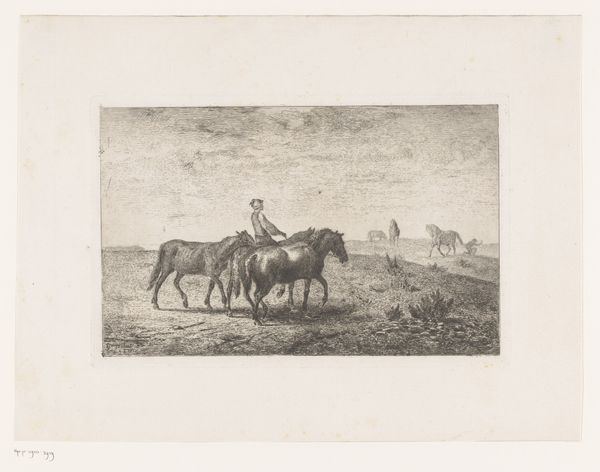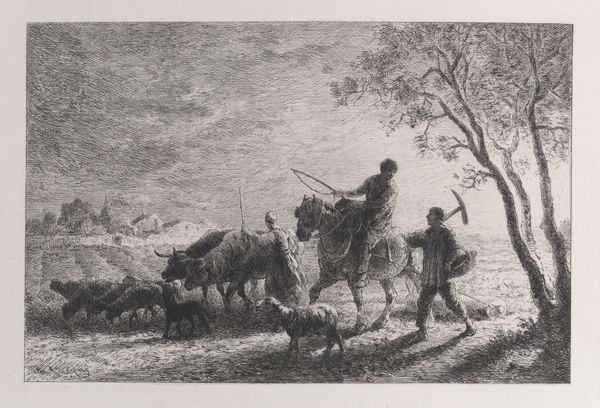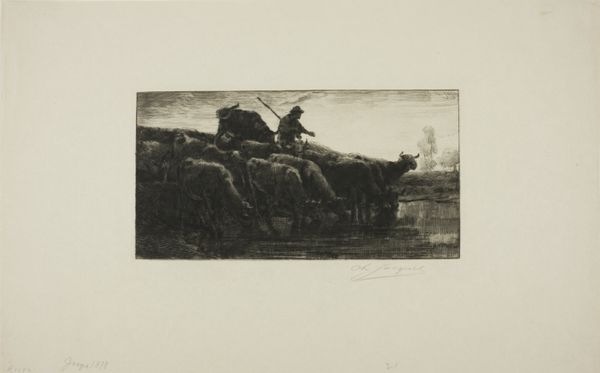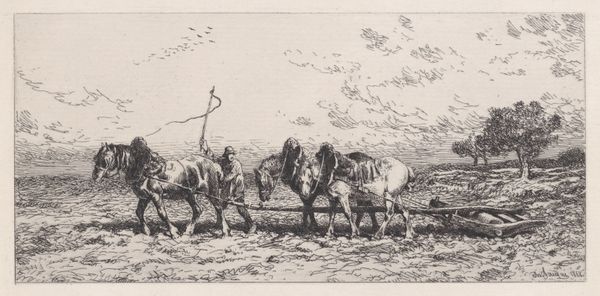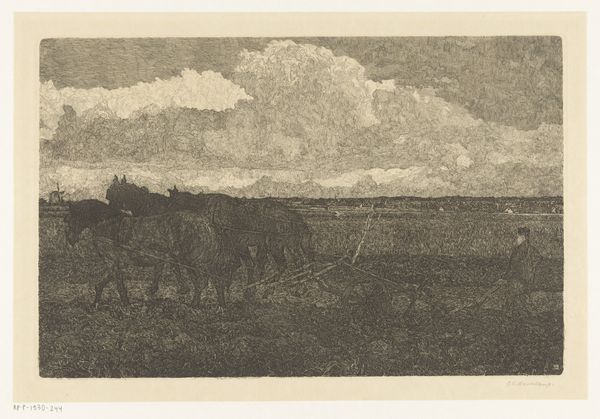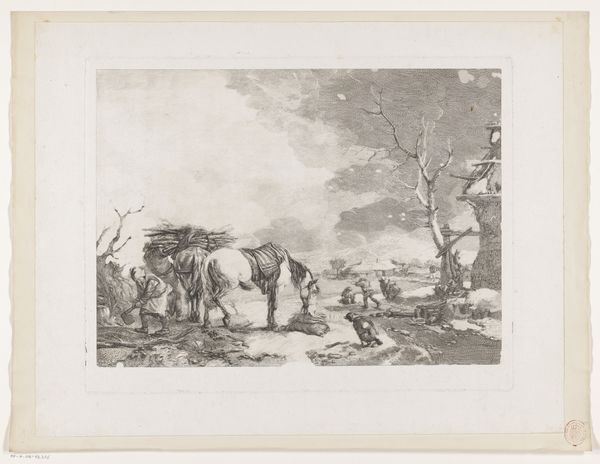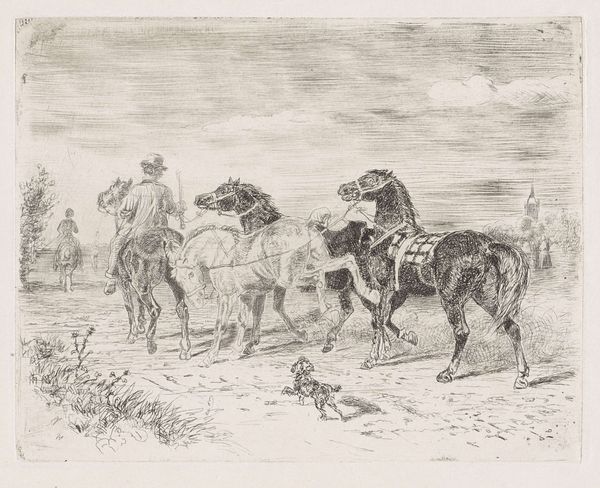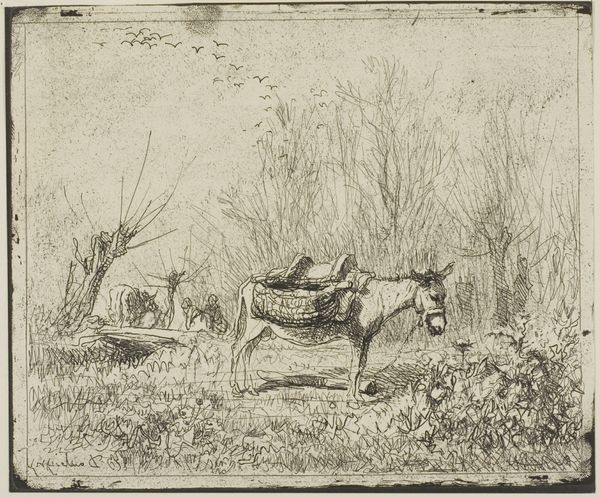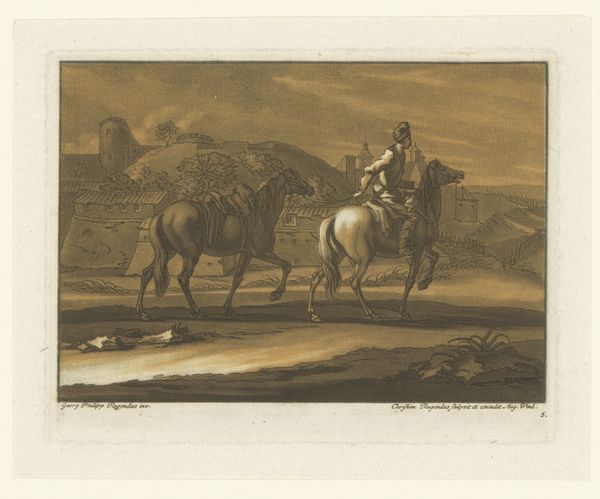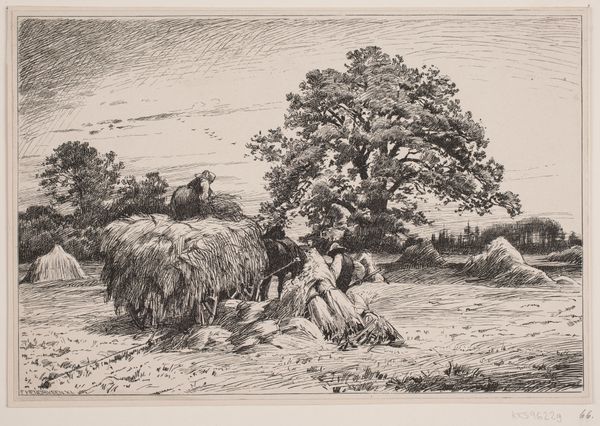
drawing, print, etching
#
drawing
# print
#
etching
#
landscape
#
genre-painting
#
realism
Dimensions: Sheet: 13 1/2 × 12 7/8 in. (34.3 × 32.8 cm) Plate: 5 1/2 × 8 1/4 in. (14 × 21 cm)
Copyright: Public Domain
Curator: Looking at this work by Charles Jacque from 1864, called "The Morning," one immediately appreciates the intricate detail captured in this etching and print. It really draws you in. Editor: It does. It's a very somber scene; the monochromatic palette contributes to this feeling of muted labor, perhaps a bleak portrayal of rural life? Curator: Perhaps, but I see something more timeless in the representation of toil. The hunched figure on horseback evokes archetypes of the rural worker. Consider the symbol of the horse itself: throughout centuries, it has been the companion animal of farming communities. Editor: That reading strikes me as romanticized. These agricultural laborers were often working under oppressive social systems. I see exhaustion here, not timelessness, which certainly complicates the reading. Curator: But look at the precision of line, the way the artist captures the light of dawn breaking across the landscape. Does that luminosity not hold promise? Even hope? Editor: Hope perhaps for whom? Is it not the landed gentry who benefited from scenes such as these, and who often commissioned such works, not the other way around? Curator: Regardless of who the work may have been intended for, its artistic merit endures. Its appeal comes from the universal imagery that exists within; this visual record reminds us how connected we are, not only to this genre of pastoral scene, but to a sense of humanity which continues to reside, unchanged, throughout generations. Editor: I do recognize the technical skill at play, how it does create an image which could resonate widely, though not always with progressive meaning for its viewers across time. It's a window into the world that reflects back how differently people inhabit space, work, and perceive beauty depending on their positions and backgrounds. Curator: Indeed. Art allows us to confront perspectives. A scene may evoke very different memories and understanding for both the viewer, and also across multiple readings of the same symbols which were so familiar for the generations that created it. Editor: Absolutely. Considering these divergent perspectives hopefully broadens the historical narrative surrounding rural life and genre paintings, prompting reflection on historical and social contexts.
Comments
No comments
Be the first to comment and join the conversation on the ultimate creative platform.

